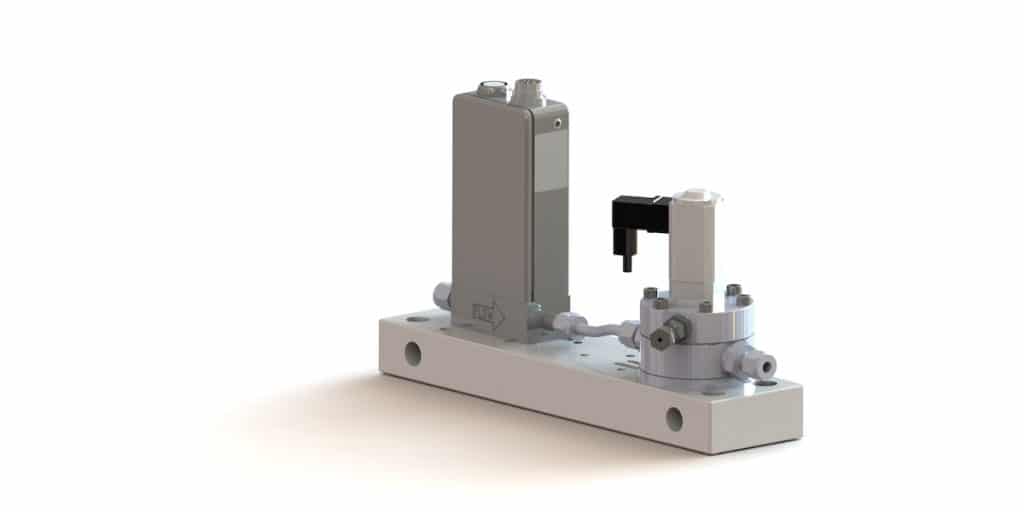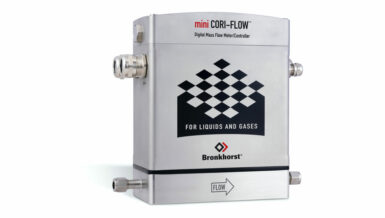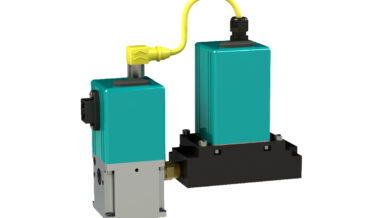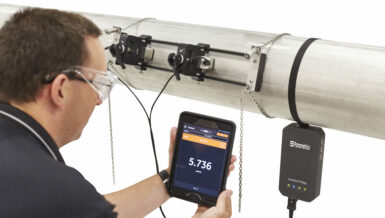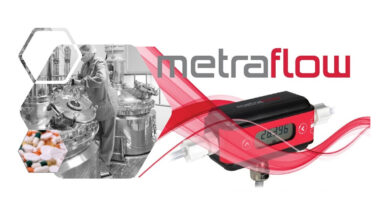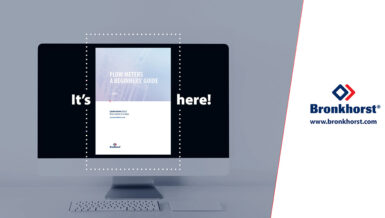How does flow control usually work?
Normally, step 1 in fluid control is the flow sensor:
For measuring extremely small flow rates, Coriolis sensors have become available. The accuracy of Coriolis flow sensors are unsurpassed: Commercially available sensors can allready handle flow rates starting at a few milligrams per hour! From an instrumatation point of view, this is a truly exceptional achievement. Especially so, considering that flow measurement is based on a frequency shift of a steel tube initiated by the impuls from the mass of the molecules.
Subsequently, step 2 is selecting the valve to control your low flow rates:
For low pressure (up to 10 bar gauge), suppliers of Coriolis sensors often offer adequate valves. In the case of higher pressures (above 10 bar gauge), these are often not capable of handling the pressure drop and/or flow rangeability.

Flow control combining Coriolis sensor & Equilibar back pressure technology
However, Equilibar ® dome-loaded precision back pressure valves are designed to handle high pressure drops and offer an extremely large flow rangeability. These valves are capable of handling extremely low flow rates at high pressure drop, at high precision. The actuation of the valve happens by modulating the pilot pressure at the dome of the dome-loaded valve, pushing and releasing a diaphragm on and from multiple orifices. The result is a force balance between the reference (dome) pressure and the pressure upstream of the dome-loaded valve.
A characteristic of the Coriolis sensor is the pressure drop over the long and narrow measuring tube. This pressure drop can be used as an advantage: When an increasing flow results in an increasing pressure drop over the flow sensor, the reference pressure needs to decrease accordingly. The pressure drop over the sensor creates a control bandwith for the reference pressure, enabling to exactly regulate the – fluctuating – reference pressure that is required to achieve constant flow through the flow control set-up.
See also the schematic above as well as this blog on flow control to learn more how we can solve flow control challenges with this set-up.
Demo video using the Bronkhorst ML120
The video below demonstrates how we combine a Coriolis sensor (in this case we use a Bronkhorst ML120) and an Equilibar dome loaded valve actuated upon the feedback signal of the sensor. This particular combination handles a flow rangeability from 0,1…200 gr/h of liquid or gas with an accuracy of 0,02 gr/h.
Additionally (not shown in this video), we used the same hardware to also test higher flow rates up to 500 gr/h. We found that above 200-300 gr/h of compressed air the pressure drop starts to increase rapidly (up to 15 bar gauge). By increasing the inlet pressure of 200 bar, we could control up to from 0,1…500 gr/h with one single device. A stunning 1:5.000 ratio!
With wetted parts of SS316 (optionally Hastelloy 276), PTFE and Kalrez (or Viton) this is the most versatile combination for low flow control available in the market today.
Want to know more?
Feel free to contact us to learn more and discuss the possibilities for your process.



